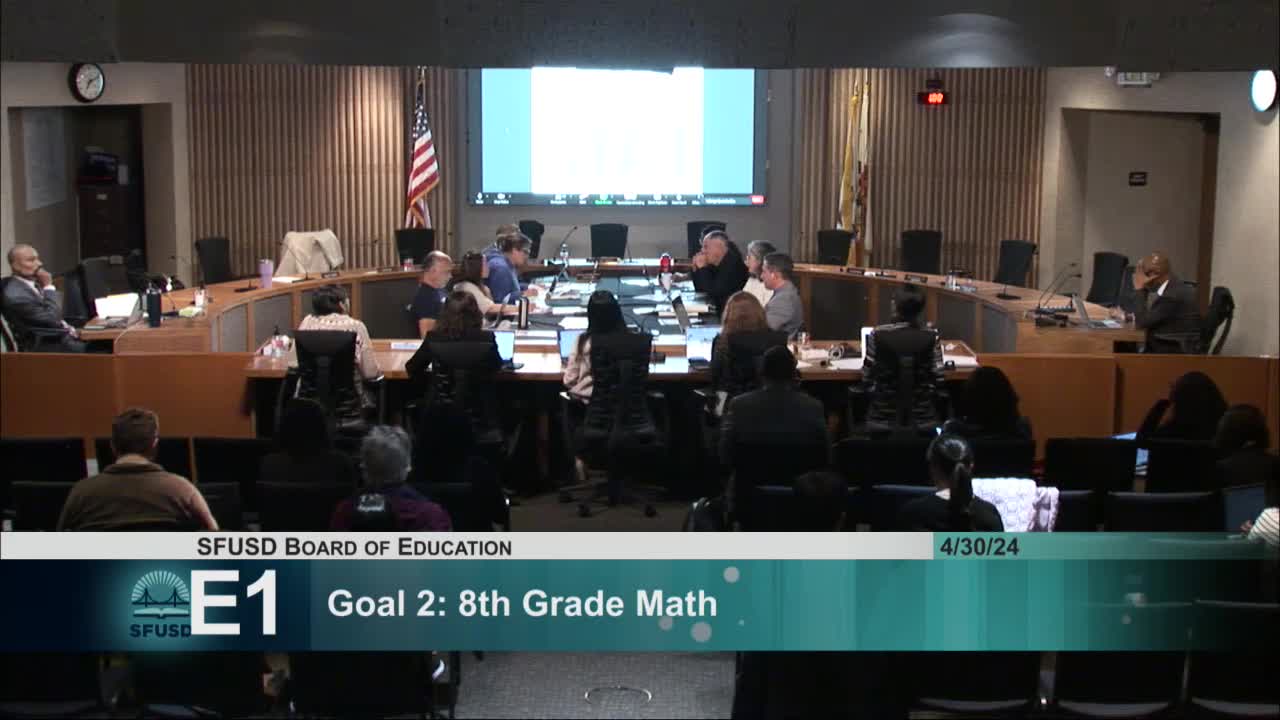School leaders assess strategies for improving student outcomes amid progress concerns
April 30, 2024 | San Francisco City, San Francisco County, California

This article was created by AI summarizing key points discussed. AI makes mistakes, so for full details and context, please refer to the video of the full meeting. Please report any errors so we can fix them. Report an error »

In a recent meeting, San Francisco education officials expressed deep concerns about the lack of progress in student achievement and the impact this has on families. The discussions highlighted the urgent need to address the educational gaps that have emerged, particularly as students continue to fall behind.
Superintendent Dr. Priestley was questioned about the effectiveness of current strategies aimed at improving student outcomes. Officials sought clarity on the expected growth percentages for the year and whether the implemented strategies would indeed help meet the district's educational goals. Dr. Priestley acknowledged that while the district has set ambitious targets, the growth seen so far has not met expectations.
A significant focus was placed on the use of educational tools like DreamBox, which is designed to support math learning. Officials emphasized the importance of using research-based programs that align with educational standards and cater to the needs of traditionally underserved students. However, there was a notable absence of specific numerical goals tied to these strategies, raising questions about accountability and measurable outcomes.
The conversation also touched on the need for a comprehensive approach that includes curriculum adoption and professional development, alongside supplemental tools like high-dose tutoring and DreamBox. Officials recognized that while these strategies have shown promise in other contexts, there is no guarantee of success without careful implementation and ongoing evaluation.
As the district moves forward, the emphasis will be on refining these strategies and ensuring they are effectively tailored to meet the diverse needs of students. The discussions underscored a commitment to transparency and a desire for data-driven decision-making to enhance educational outcomes for all students in San Francisco.
Superintendent Dr. Priestley was questioned about the effectiveness of current strategies aimed at improving student outcomes. Officials sought clarity on the expected growth percentages for the year and whether the implemented strategies would indeed help meet the district's educational goals. Dr. Priestley acknowledged that while the district has set ambitious targets, the growth seen so far has not met expectations.
A significant focus was placed on the use of educational tools like DreamBox, which is designed to support math learning. Officials emphasized the importance of using research-based programs that align with educational standards and cater to the needs of traditionally underserved students. However, there was a notable absence of specific numerical goals tied to these strategies, raising questions about accountability and measurable outcomes.
The conversation also touched on the need for a comprehensive approach that includes curriculum adoption and professional development, alongside supplemental tools like high-dose tutoring and DreamBox. Officials recognized that while these strategies have shown promise in other contexts, there is no guarantee of success without careful implementation and ongoing evaluation.
As the district moves forward, the emphasis will be on refining these strategies and ensuring they are effectively tailored to meet the diverse needs of students. The discussions underscored a commitment to transparency and a desire for data-driven decision-making to enhance educational outcomes for all students in San Francisco.
View full meeting
This article is based on a recent meeting—watch the full video and explore the complete transcript for deeper insights into the discussion.
View full meeting
